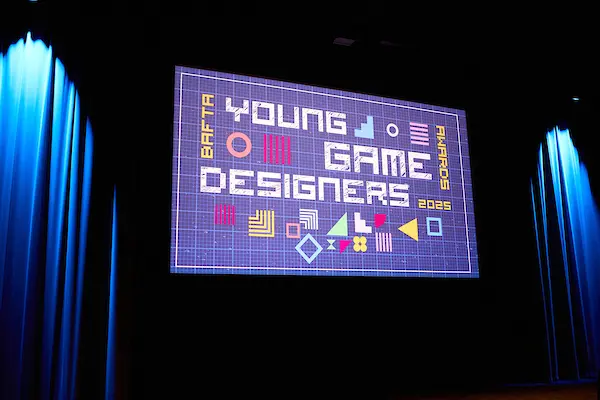In June we held a masterclass in which senior figures from BBC Children’s, Animation UK and the LEGO Group, as well as a presenter and a screenwriter, addressed the issue of Why Children’s Content Matters. TV journalist Robin Parker shares highlights of a wide-ranging discussion about an industry fighting for survival after years of under-investment, escalating competition for attention and the changing habits of a demanding audience.
Children have never had so much choice of entertainment. From on-demand blockbuster movies and games to homegrown and international shows, plus the bewildering choice to consume, create and respond offered by TikTok, Snapchat, YouTube, Instagram and beyond, the options are seemingly endless.
But cutting through the noise is harder than ever and the UK children’s media industry is fighting for survival. Despite the enduring popularity of characters and stories beloved by children around the world, from Paddington to Peppa Pig, Paw Patrol and Teletubbies, the volume of first-run UK original children’s programmes hit a ten-year low last year. The PSBs spent £80m on children’s content in 2022, a drop of £30m over a decade, with one major government intervention – the £44m BFI Young Audiences Content Fund – quietly closed.
Industry champions like BAFTA Fellow Baroness Floella Benjamin and Russell T Davies are shouting from the rafters about the urgent need to protect well-funded, high quality output. It’s a timely reminder that for the good of their social inclusion and emotional wellbeing, children deserve to see their lives, in all their diversity, reflected in spaces free from unregulated and potentially harmful content funnelled through narrow algorithms.
This BAFTA masterclass set out to ask: why does children’s content matter? Animation UK executive chair Kate O’Connor offered the audience one obvious answer: children “represent 25% of the audience and 100% of our future.”
Kez Margrie, a commissioning editor in factual and factual entertainment for BBC Children’s, picked up the theme. “You’re only a child once. We all remember characters and stories that we saw as children and took with us into the world, that helped us in our life.”
Children’s TV also makes careers. It is an entry point for audiences – and a pathway to family viewing of shows like Gladiators or Ghosts – and for talent, with a rich history of nurturing future stars of grown-up TV.
BAFTA’s approach to this part of the industry is to keep evolving with no loss of commitment; alongside events such as this, it will spotlight creative success in children’s content in dedicated categories at each of BAFTA’s annual flagship Film, Television and Games Awards from next year.
The masterclass was the first event held under the Young BAFTA brand under Young BAFTA Advisory Group chair and BAFTA Trustee, Andrew Miller MBE, who started at Channel 4 as one of British TV’s first disabled presenters of children’s programmes.
He reminded attendees: “The children’s media sector leads the way when it comes to diverse, well-regulated and educational storytelling.” With events like this, he said, BAFTA recognises that it needs to “keep banging the drum for the sector alongside supporting and nurturing young people’s creativity” through National School Roadshows and its Young Game Designers and Young Presenters programmes.
O’Connor highlighted the stark contradiction of a sector that can feel justified in feeling a little bruised and unloved.
“We’re at the top of our game,” she said. “The world looks to the UK for our excellence in storytelling and innovation and craft. And yet we’re just not investing in our content in the UK for kids – we’ve seen a massive decline in PSB investment over the last 15 years on all screens. And that’s just not good enough.”
Online disruptors have traditionally borne the brunt of the industry’s ire, but Margrie urged more traditional players to embrace the competition and apply traditional storytelling skills into new forms, whether 10 seconds or half an hour.
Creators can also benefit from spending more time with their audience and producing content centred on their particular passions, she added.
Margrie said producers and commissioners have much to learn from the imaginations of young creators. “If we bring in a gamer or a YouTuber who’s used to creating their own content into our TV world, they’re like, ‘Oh my god, how long does it take for you to make this? What, it’s not coming out until six months later? What are you talking about?’ It’s things like that that we really need to learn from.”
Efforts are underway at ScreenSkills to bridge that gap with entry-level placements on schemes such as Dream Big and Trainee Finder. “We need to look at ways that we can bring people into the industry who are currently making their own content,” said the body’s head of unscripted and children’s TV, Sarah Joyce. “There are techniques and technologies that need to be absorbed within the more traditional linear landscape for the industry to keep evolving and to keep being groundbreaking.”
Hours spent in the seemingly authentic world of social media has made children more sceptical of what they see and Margrie encouraged producers to push harder on presenting the value of their content.
“The biggest thing that traditional TV content is learning is that kids just want to see the truth,” she said. “Traditionally, TV has been quite fake and kids see that. You used to cut out anything that went wrong and put it at the end as bloopers … let’s just put that at the top and get kids really excited. Why do they want to watch half an hour when they’re used to spending 10 seconds watching? They have to know right from the top what they’re going to get, why they want to watch it, and who is presenting it to them.”
Braydon Bent, a presenter, vlogger and BAFTA Young Presenter alumnus, offered a 15 year-old’s perspective on content consumption, which in his case is typically in 30-second to minute-long bursts, and on breaking down traditional formal entry points into content production.
“Nowadays, if you have an idea, there are lots of ways in which you can get it across,” he said. “You can hear what people have to say and you can collaborate – all it takes is a message.”
Bent said this reflected audience habits. “The best way to get across to young people is having it peer-to-peer,” he said. “If you’re watching something with an adult on it and they’re just offloading information, you can just switch off. Whereas if you’re hearing it from someone your age, then you almost have an incentive to listen a bit more because you can relate to each other.”
Actor and writer Nathan Bryon, who entered TV without connections or a degree who got his break on the Rastamouse writer’s room, praised children’s TV for its track record of breaking new and diverse talent. O’Connor, meanwhile, said the sector’s reputation for inclusion is key to its survival.
“We have to invest even more in the kids content sector because we are the engine of the overall sector and people in all sorts of roles in all sorts of capacities will move on to other parts of the wider industry if they want to.”
It’s a different story in video games, however, which, as a younger part of the industry, has a less mature look on representation, according to LEGO Group SVP, digital consumer engagement Anna Rafferty.
This is something the sector’s trying to put right, with the Geena Davis Institute for Gender in Media producing a report and toolkit for creators to avoid unconscious othering of games’ characters.
“Some parts of game narrative and content haven’t completely caught up with the TV industry,” said Rafferty, “Kids really need to be able to see female characters that aren’t bit parts [with] oversexualised body images. It’s about the workforce and about making sure that your team has a representation, which has been difficult in that industry as well.”
The work feeds into the LEGO Group’s mission to make games a safe and positive space for young players. The company has partnered with UNICEF on Responsible Innovation for Technology in Children (RITEC), an initiative to rigorously test the design of digital content to produce an experience that positively impacts children’s wellbeing.
“Rather than try and keep kids out of digital spaces – which doesn’t work because they just lie about their age and go into places that weren’t designed for them – we will try to give a really good blueprint for people who create digital content and show them what good looks like,” she said.
Above all, children want and need to see themselves on screen. Margrie points to CBBC’s long-running first-person documentary strand My Life, and highlights Operation Ouch’s popularity with disabled children.
“It would be very easy to just do medical model portrayal of disabled kids and we work really hard [to ensure] that isn’t the case,” she said. “The child is very specific about their disabilities, and it’s really important to them that you know ‘this is who I am and this is what I bring and this is what I love about myself’. It’s so valuable. For the children watching, it will mean that they hopefully go out and be confident citizens in the world.”
It comes back to that word ‘authenticity’: rather than a box-ticking “Benetton group of kids”, she said, it’s about lived experience of individual children.
“We would never commission a show that didn’t absolutely reflect the children from across the UK,” she said. “We would be failing UK children if we didn’t take it really seriously and embrace it.”
Panellists for the Why Children’s Content Matters event were Braydon Bent, TV presenter, vlogger and BAFTA Young Presenter alumnus; Kez Margrie, commissioning editor, Factual & Factual Entertainment, BBC Children’s; Kate O’Connor, executive chair, Animation UK; Nathan Bryon, actor, author, screenwriter; and Anna Rafferty, SVP, Digital Consumer Engagement, LEGO Group. Additional speakers were Catherine Ellis, head of climate content, BAFTA albert and Sarah Joyce, head of unscripted and children’s TV, ScreenSkills. With thanks to Cartoon Network, Moonbug Entertainment and Nickelodeon as Official Supporters of our Young BAFTA programme.
Explore upcoming events in our year-round programme here.










